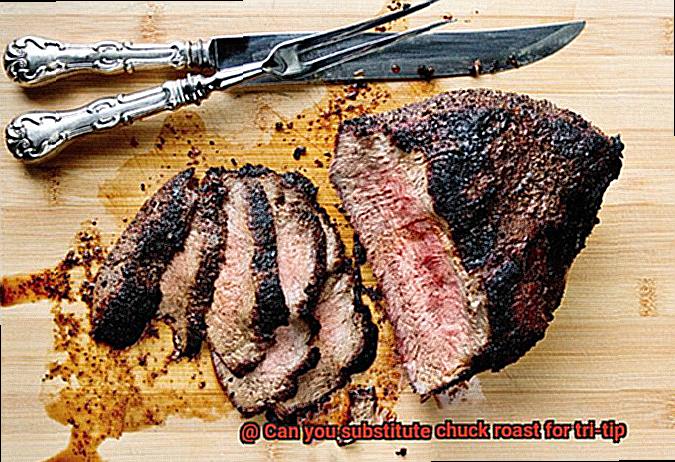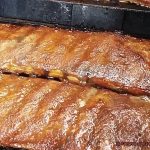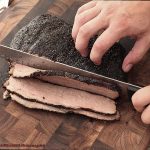Are you planning a mouthwatering meal for your loved ones, but your recipe requires tri-tip, and all you have is chuck roast? Don’t worry; we’ve got you covered. The million-dollar question is “Can you substitute chuck roast for tri-tip?” It’s easy to assume that all beef cuts are created equal, but that’s far from the truth. In this blog post, we’ll explore the differences between these two cuts of meat and give you the answer once and for all.
Tri-tip is a triangular-shaped cut of meat taken from the cow’s bottom sirloin. It’s lean, tender, and has a distinct beefy flavor. On the other hand, chuck roast comes from the shoulder area of the cow and is tougher than tri-tip. It has a richer connective tissue flavor that requires more cooking time to break down.
Texture and taste are essential factors when it comes to cooking with different cuts of meat. Substituting chuck roast for tri-tip will affect both texture and flavor in your dish. However, with some adjustments to your recipe, it can still turn out delicious.
Another crucial factor is cooking method. Tri-tip is best grilled or roasted in an oven at high temperatures while chuck roast requires slow cooking at low temperatures to break down its connective tissues.
So, can you substitute chuck roast for tri-tip? Yes. But keep in mind that it will require some adjustments in terms of taste, texture, and cooking method. Stay tuned as we explore how to make this substitution work perfectly for your next meal.
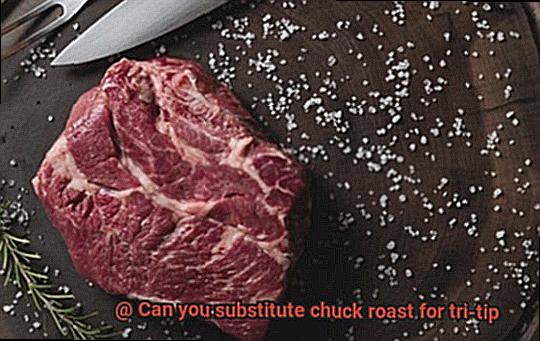
Contents
What is Tri-Tip?
This unique beef cut comes from the bottom sirloin muscle and is known for its triangular shape, hence its name. It’s a popular choice on the West Coast of the United States, where it’s also called Santa Maria steak.
But what makes tri-tip so special? For starters, it’s incredibly flavorful and tender when cooked correctly. Grilling or roasting are both great options for cooking this delicious cut of meat. You can season it with your favorite spices or marinades to enhance its natural flavor or keep it simple with just salt and pepper. It’s versatile enough to be used in sandwiches, tacos, and other dishes too.
If you’re looking to substitute tri-tip with another cut of beef, chuck roast is an option. However, keep in mind that chuck roast is a tougher and fattier cut that comes from the shoulder, so you may need to adjust your cooking time and temperature accordingly. It’s recommended to marinate chuck roast overnight to help tenderize the meat and add flavor.
What is Chuck Roast?
So, what exactly is chuck roast? It’s a cut of beef that hails from the shoulder area of a cow. And let me tell you, it’s bursting with flavor. When prepared correctly, chuck roast becomes tender and juicy, making it a go-to choice for roasting or slow cooking. In addition to its scrumptious taste, chuck roast won’t put a dent in your wallet like some other cuts of beef.
There are different types of chuck roast available, including boneless chuck roast, chuck roast with bone-in, and shoulder pot roast. Each type has its unique properties and can be used in a variety of recipes. For example, boneless chuck roast is perfect for slow cooking or roasting while chuck roast with bone-in is ideal for stews or soups.
When choosing your chuck roast, keep an eye out for marbling – those white streaks of fat that run throughout the beef. This will help keep the meat moist and flavorful during cooking. Additionally, selecting a relatively uniform shape and size will guarantee even cooking.
The Differences Between Tri-Tip and Chuck Roast
First, let’s start with the basics. Tri-tip is a triangular-shaped cut from the bottom sirloin, while chuck roast comes from the shoulder area. Tri-tip is a leaner cut of meat with a rich, beefy flavor and a tender texture. In contrast, chuck roast is a tougher cut with more fat and connective tissue.
If you’re planning to fire up the grill or smoker, tri-tip is the way to go. Its lean texture and quick cooking time make it perfect for grilling to medium-rare or medium doneness. On the other hand, chuck roast is ideal for slow cooking methods like roasting or braising. Its tough texture and abundance of fat and connective tissue mean it can handle longer cooking times while becoming tender and flavorful.
It’s crucial to keep in mind that substituting one cut for another can significantly impact your dish’s taste and texture. So, if possible, stick to your recipe’s recommended cut. However, if you need to make a substitution, consider the differences between tri-tip and chuck roast and adjust your cooking method accordingly for optimal results.
Can You Substitute Chuck Roast for Tri-Tip?
Don’t worry; chuck roast can be an excellent substitute. As an expert on the topic, I can tell you that while tri-tip and chuck roast are different cuts of meat, there are ways to make chuck roast just as mouth-watering as tri-tip.
First, let’s talk about the basics. Chuck roast is a tough cut of meat that requires slow cooking to break down the connective tissue and turn it tender. Tri-tip, on the other hand, is a leaner cut with a milder beefy flavor that’s perfect for grilling or smoking. While tri-tip may be more popular, chuck roast is an affordable alternative for budget-conscious cooks.
To ensure that your chuck roast stays moist and tender when grilling, there are some extra steps you should take. First off, marinating the meat for at least thirty minutes before grilling will add moisture and flavor to the beef. A marinade with acidic ingredients such as vinegar or citrus juice can help break down the tough fibers of the meat.
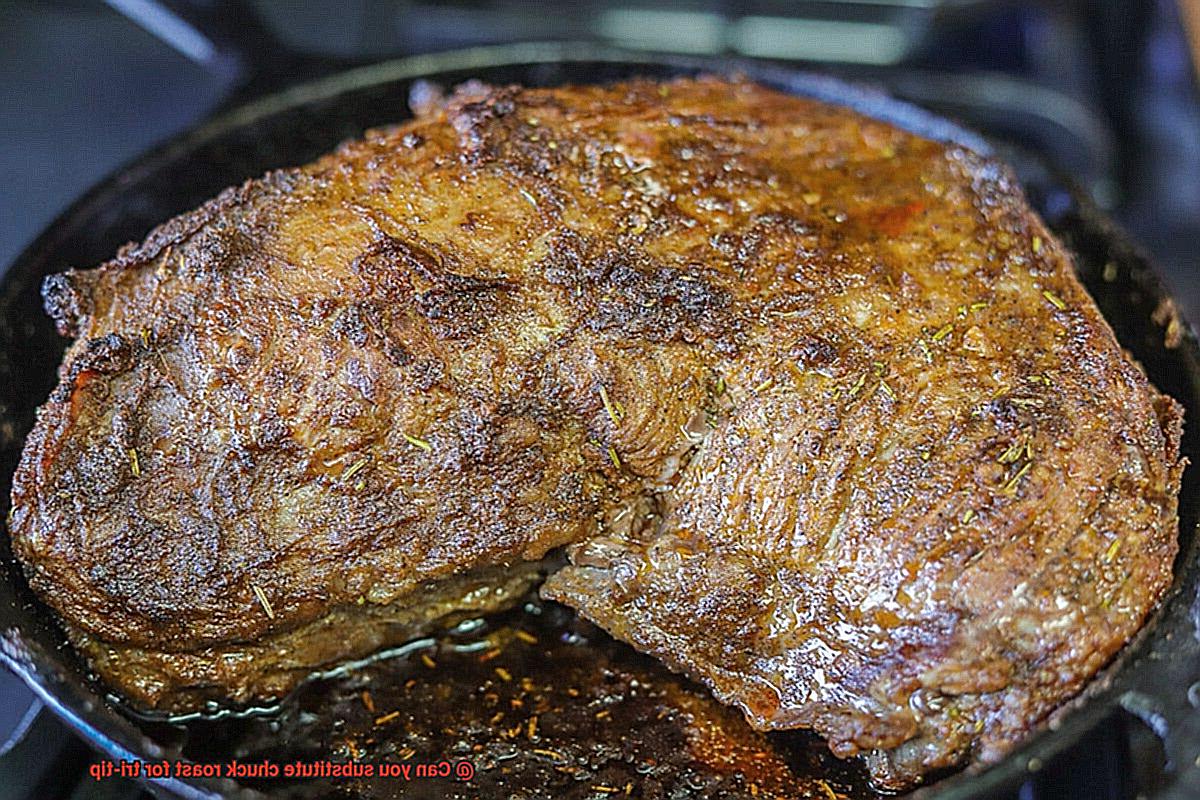
Another critical step is to use a meat thermometer to ensure that the internal temperature reaches 135-140°F for medium-rare doneness. Overcooking the chuck roast will result in a dry and tough texture. It’s essential to monitor its temperature closely.
Lastly, consider adding some extra fat to the meat before grilling to prevent it from drying out. Trim any excess fat from the chuck roast and rub it with olive oil or butter.
Tips for Substituting Chuck Roast for Tri-Tip
Substituting chuck roast for tri-tip can be a great way to switch things up in the kitchen. However, it’s important to keep in mind that these two cuts of meat have different textures and flavors.
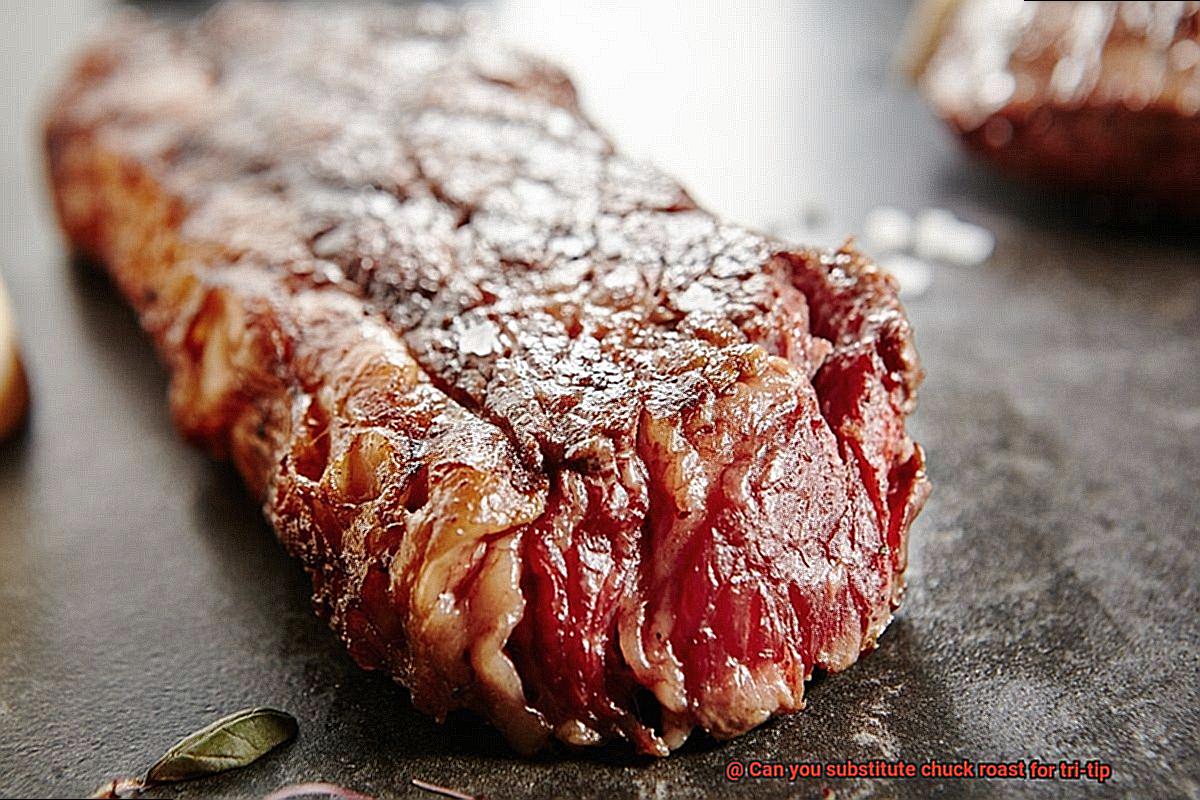
Tri-tip is leaner and more tender with a beefy flavor, while chuck roast is tougher with more marbling and a richer, deeper flavor. To help you achieve the best results when substituting chuck roast for tri-tip, here are five tips to keep in mind.
Tip #1: Adjust the cooking time and temperature
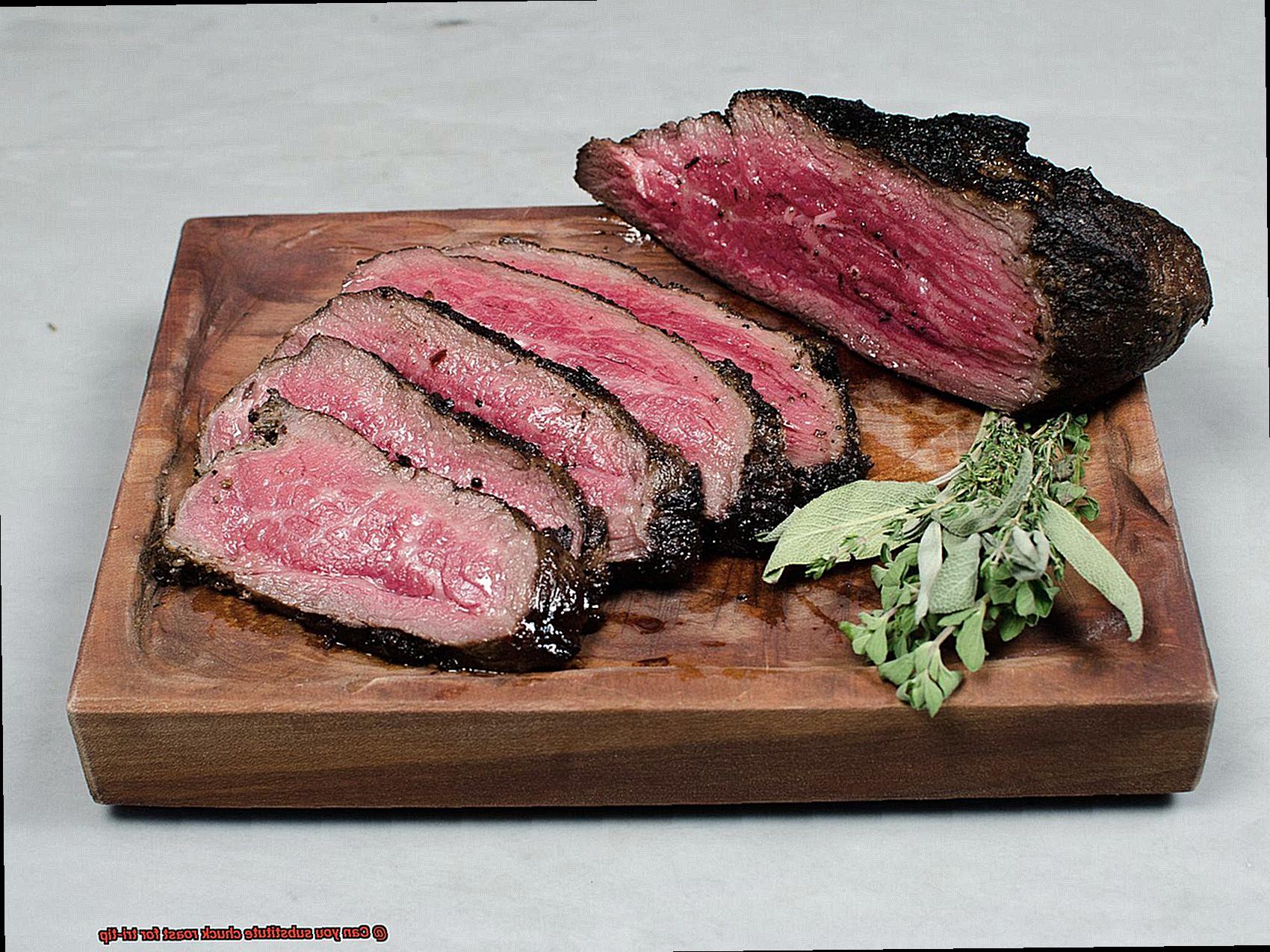
Since chuck roast is a tougher cut of meat than tri-tip, it needs to be cooked low and slow to become tender. This means you may need to increase the cooking time or lower the heat if you’re using a recipe that’s designed for tri-tip. Using a slow cooker or roasting the meat in the oven can be great ways to achieve this.
Tip #2: Marinate the meat before cooking
Marinating the chuck roast before cooking can help to add flavor and tenderize the meat further. A simple marinade of olive oil, garlic, salt, and pepper can work well for chuck roast. Letting it sit in the marinade for at least an hour will allow the flavors to penetrate the meat.
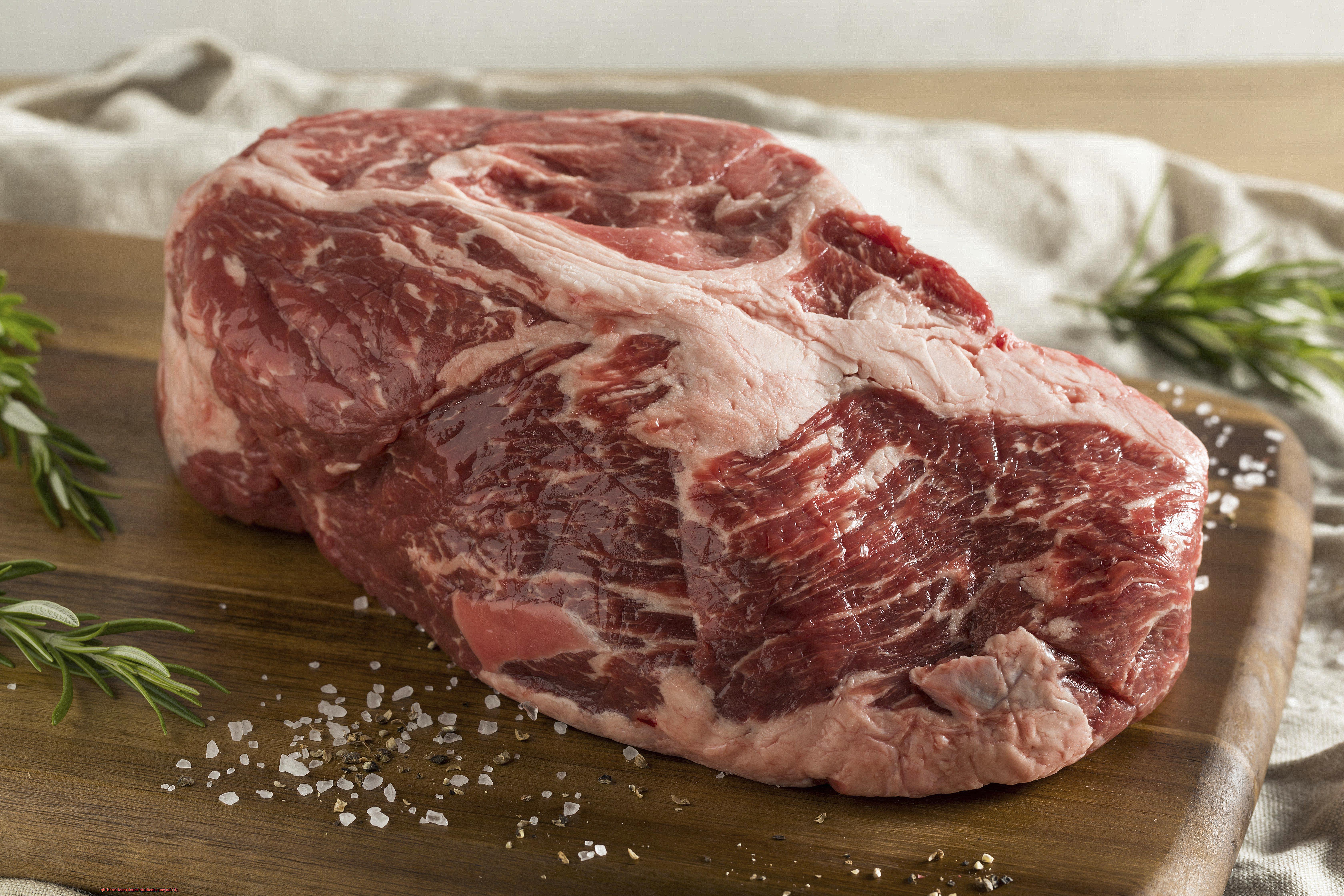
Tip #3: Sear the meat on high heat first when grilling
When grilling chuck roast as a substitute for tri-tip, it’s important to sear the meat on high heat first to get a nice crust before lowering the heat and continuing to cook. This will help to lock in the juices and create a flavorful crust. You can also use indirect heat by moving the meat to a cooler part of the grill after searing.
Tip #4: Trim any excess fat from the chuck roast before cooking
Trimming any excess fat from the chuck roast before cooking can help prevent the meat from becoming too greasy and will also help it cook more evenly. Leaving some fat on the roast can add flavor and moisture, but too much can lead to an unpleasant texture.
Tip #5: Slice the meat thinly against the grain when serving
When serving chuck roast as a substitute for tri-tip, it’s important to slice it thinly against the grain. This will help to ensure that each slice is tender and easy to chew. Cutting against the grain breaks up the muscle fibers and makes the meat more tender.
Benefits of Using Chuck Roast Over Tri-Tip
As an expert on this topic, I can tell you that chuck roast has numerous benefits over tri-tip.
First and foremost, let’s talk about cost. Chuck roast is a budget-friendly option that won’t break the bank, making it perfect for those who want to feed a crowd without overspending. But just because it’s affordable doesn’t mean it lacks flavor or tenderness.
One of the major benefits of chuck roast is its higher fat content, which makes it more forgiving when it comes to cooking. Unlike tri-tip, which can easily become overcooked or dry out on the grill, chuck roast retains its moisture and flavor even if you’re new to grilling. This means that you can achieve a delicious and juicy result every time.
But that’s not all – chuck roast is also incredibly versatile. Whether you’re making a hearty stew or a classic pot roast, the possibilities are endless. Plus, if you have any leftovers, you can easily shred the meat and use it for sandwiches or wraps.
Potential Drawbacks of Using Chuck Roast Instead of Tri-Tip
While it’s a great budget-friendly option, it’s essential to consider the potential drawbacks before making the substitution.
One of the most significant differences is the texture and tenderness of the meat. Tri-tip is known for its juicy and tender texture, while chuck roast can be tougher and chewier. This can significantly impact the overall flavor and enjoyment of the dish.
Another challenge with chuck roast is that it tends to have more fat and connective tissue throughout the meat. These factors can make it more challenging to cook evenly, leading to some parts of the meat being overcooked or undercooked. This can also negatively affect the overall flavor and texture of your dish.
The flavor profile is another aspect to keep in mind. Tri-tip has a distinct beefy flavor that many people enjoy, while chuck roast may have a stronger or more gamey flavor. Depending on how you season and cook it, you may experience a significant difference in taste.
Lastly, it’s worth noting that while chuck roast is generally less expensive than tri-tip, it’s not always cost-effective. You may end up needing more meat or spending additional time and effort on cooking it properly, ultimately increasing the total cost.
8oqNwzsGQe0″ >
Conclusion
In summary, the answer to whether you can swap chuck roast for tri-tip is a cautious yes. While both cuts of beef can be delicious, they have their differences in terms of texture, flavor, and cooking method. Tri-tip is a leaner and more tender cut with a milder taste that’s perfect for grilling or smoking. Meanwhile, chuck roast has more marbling and a richer flavor but requires slow cooking to break down its connective tissue.
If you’re planning to use chuck roast instead of tri-tip, there are some things to keep in mind. Adjusting the cooking time and temperature is crucial since chuck roast needs longer cooking times than tri-tip. Marinating the meat beforehand will also help infuse it with flavor and tenderness. When grilling, sear the meat on high heat first to lock in juices before finishing it off at lower temperatures.
However, bear in mind that substituting one cut of meat for another may impact your dish’s texture and taste. Chuck roast has more fat than tri-tip, which can affect evenness of cooking or alter the final result’s flavor profile. But don’t let this discourage you. With these tips in mind, you can still create mouth-watering meals for your loved ones while being mindful of these variations.
In conclusion, while chuck roast is an affordable alternative for budget-conscious cooks that can be versatile and forgiving when it comes to cooking mistakes, it’s essential to consider potential drawbacks such as texture differences or fat content variations affecting evenness of cooking or taste changes.

